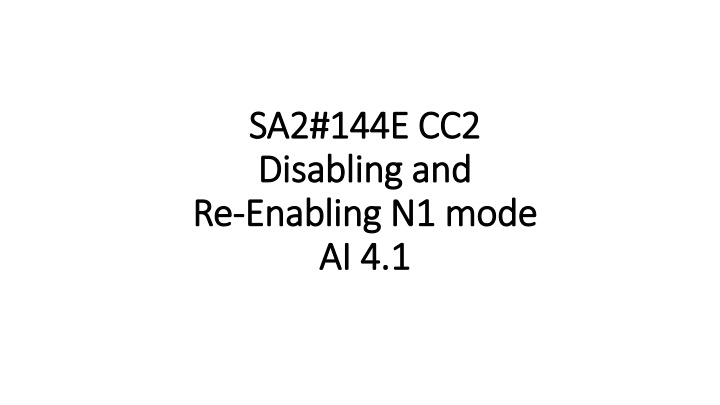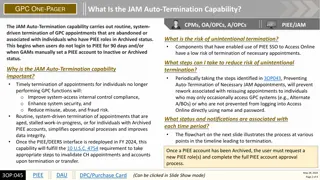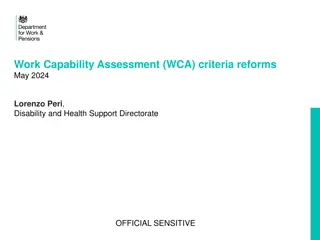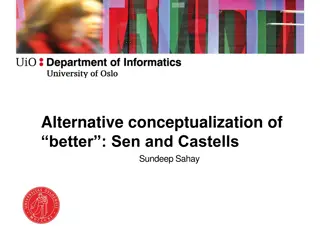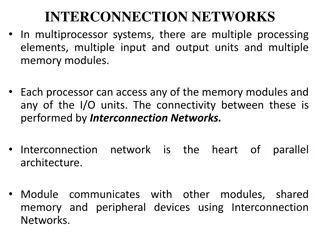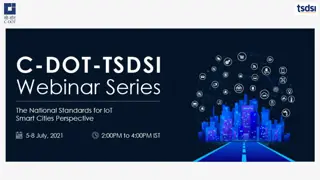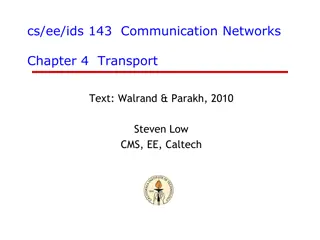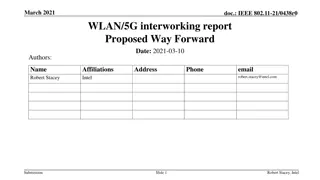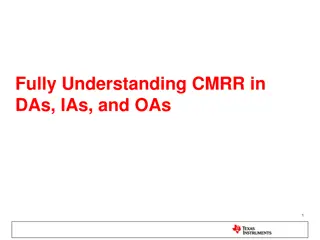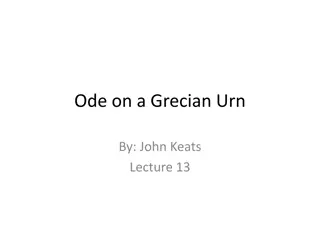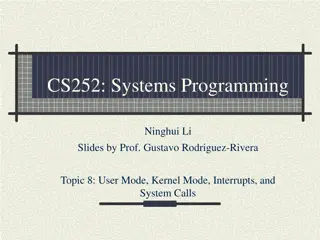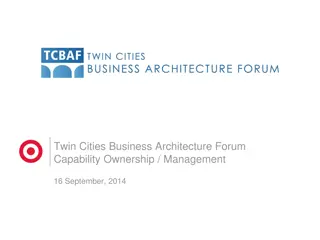Interworking Considerations for N1 Mode Capability in 5G Networks
The article discusses the implications of disabling and re-enabling N1 mode capability in UE operations when transitioning between 5G and 4G networks. It explores scenarios where session continuity may be affected and proposes solutions endorsed by industry stakeholders. Key points include the allocation of PDU session IDs, network tracing possibilities, and working agreements to address potential challenges. The document highlights technical revisions and optional functionalities supported by major telecom equipment providers to enhance interworking between 5G and 4G networks.
Download Presentation

Please find below an Image/Link to download the presentation.
The content on the website is provided AS IS for your information and personal use only. It may not be sold, licensed, or shared on other websites without obtaining consent from the author.If you encounter any issues during the download, it is possible that the publisher has removed the file from their server.
You are allowed to download the files provided on this website for personal or commercial use, subject to the condition that they are used lawfully. All files are the property of their respective owners.
The content on the website is provided AS IS for your information and personal use only. It may not be sold, licensed, or shared on other websites without obtaining consent from the author.
E N D
Presentation Transcript
SA2#144E CC2 SA2#144E CC2 Disabling and Disabling and Re- -Enabling N1 mode Enabling N1 mode AI 4.1 AI 4.1 Re
Introduction / background Introduction / background R16 maintenance topic/ LS on interworking to 5GS with N26 due to UE s N1 mode capability disabling/enabling: C1-207531/S2-2100037 The UE operating in single-registration mode has disabled its N1 mode capability when registered in 5G and then moves to 4G of the current PLMN with N26 interface supported. The UE initiates an EPS attach or TAU procedure in 4G during which the UE will indicate N1 mode is not supported. Hereafter, the UE requests to establish a new PDN connection in 4G during which the UE will not generate the PDU session ID included in the (e)PCO IE to the network and the network will not include the mapped PDU session parameters (e.g. QoS flow descriptions, Session-AMBR, QoS rules) included in the (e)PCO IE to the UE. The UE re-enables its N1 mode capability in 4G and then moves back to 5G. As in step (3), there is no mapped PDU session parameters included in the PDN connection, this PDN connection cannot be transferred to 5G in step (4). If in above step (3), a combo PGW-C+SMF was selected for the PDN connection, whether and how to maintain the session continuity for this PDN connection when moving back to 5G? If in above step (3), a standalone PGW was selected for the PDN connection, whether and how to maintain the session continuity for this PDN connection when moving back to 5G?
S2-2102165r01.zip: UE to allocate PDU Session ID during PDN connection establishment even when N1 mode is disabled in the UE. Same PDU Session ID remains valid for the life time of PDN connection / PDU Session, even when the N1 mode is disabled,. Following compromise was offered: Functionality optional for the UE ( UE may.. ) Supported by: Qualcomm, Nokia, Ericsson, ZTE, Samsung, We had a show of We had a show of hands in SA2 144 E hands in SA2 144 E (Rel (Rel- -17) 17) S2-2102234 : When N1 mode is re-enabled UE to initiate bearer resource modification to allocate and provide PDU Session ID to the network. SMF decides to either provide the latest PDU Session ID to the PCF (PDU Session ID change in PCF, CHF, exposure etc), OR SMF to maintain a local mapping of UE provided PDU Session ID and PDU Session ID (no network tracing possible Supported by: Huawei, MediaTek 4.1 S2- 2103059 CR Approval 23.502 CR2603 (Rel-17, 'C'): Solving interworking to 5GS with N26 issue due to UE's N1 mode capability disabling/enabling Nokia, Nokia Shanghai Bell Rel- 17 Revision of S2- 2102165r01 Technically Endorsed
Asking to have a working agreement The solution in S2-2103992 (LS) + S2-2104004r01 (23.502 CR) + S2- 2104446r00 (23.501 CR) got endorsed at last SA2 after a Show Hand gave it a large support and is now objected by a single company. .
THANK YOU THANK YOU
